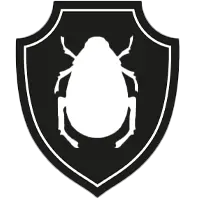I’ve been in the pest control industry for years, and I understand the distress you might feel discovering wasps in your exhaust vent. It’s not just an inconvenience; it can be a safety concern. But rest assured, you’re not alone in facing this issue.
In this article, I’ll guide you through why this happens, how to safely eliminate them, and preventive measures to ensure they don’t return.
By the end, you’ll be equipped with the knowledge to handle and prevent wasp invasions in your exhaust vents.
How to eliminate wasps in exhaust vent
Dealing with wasps in your exhaust vent can be daunting, but with the right knowledge and tools, it’s manageable. In this section, I’ll walk you through a systematic approach to safely and effectively get rid of these unwelcome guests.
Identifying the type of wasp nest
Before taking any action, it’s crucial to identify the type of wasp you’re dealing with. Different species have varying behaviors, and understanding them can help in their safe removal.
Safety precautions to take before removal
Safety should always be your top priority. Always wear protective clothing, including gloves and a face shield, to prevent any stings. Ensure that children and pets are kept at a safe distance during the removal process.
Step-by-step guide to safely removing the nest
- Choose a time when wasps are least active, preferably early morning or late evening.
- Approach the nest slowly and calmly to avoid agitating the wasps.
- Use a product like Raid Wasp Hornet Killer Spray. It’s designed to kill Wasps, Yellow Jackets, Mud Daubers, and Bald-Faced Hornets on contact. Plus, it has the added benefit of killing the entire nest and can spray up to 22 feet, ensuring you can maintain a safe distance. Remember, it’s for outdoor use only.
- After spraying, wait for a day to ensure all wasps are dead before removing the nest.
Alternative methods: natural repellents and professional help
While chemical sprays are effective, some homeowners prefer natural methods or professional assistance.
If you’re looking for a non-toxic solution, consider the RESCUE! TrapStik for Wasps.
This product uses VisiLure technology to attract and trap wasps, red wasps, mud daubers, and carpenter bees. It’s a visual attractant, meaning it lures the insects without odors or chemicals.
Moreover, its thoughtful design ensures minimal by-catch, and it’s an excellent preventive measure against potential property damage caused by mud daubers and carpenter bees.
If you’re uncomfortable handling the situation yourself, don’t hesitate to call a professional pest control specialist. They have the expertise and equipment to handle wasp infestations safely and efficiently.
In the next section, we’ll delve into understanding why wasps choose exhaust vents in the first place.
Why wasps choose exhaust vents
It’s natural to wonder why these winged invaders have chosen your exhaust vent as their home. By understanding their motivations, you can better address the issue and prevent future infestations. Let’s explore the primary reasons behind their choice.
The attraction of sheltered, dark spaces
Wasps, like many other insects, are drawn to sheltered and dark spaces. An exhaust vent provides the perfect environment for them. It offers protection from the elements, predators, and is an ideal location for building their nests.
Proximity to food sources
Wasps are predators that feed on other insects. If your home or surrounding area has a rich source of food, such as other smaller insects or flowering plants, it can attract wasps. An exhaust vent provides them with a strategic base close to their food sources.
Protection from predators
Wasps have natural predators like birds and spiders. The confined space of an exhaust vent offers them a safe haven where these predators can’t easily reach them. It’s like a fortress for them, ensuring the safety of their colony.
By understanding these motivations, you can take targeted measures to make your exhaust vent less appealing to wasps. In the upcoming section, we’ll discuss preventive measures to keep these winged pests at bay.
Preventive measures to keep wasps away
Now that we understand why wasps are attracted to exhaust vents, it’s time to discuss how to prevent them from choosing your vent as their home in the first place. Prevention is always better than cure, and with a few simple steps, you can ensure your exhaust vent remains wasp-free.
Regular vent inspection and maintenance
Routine checks are essential. By regularly inspecting your exhaust vent, you can spot early signs of a wasp infestation, such as the beginning of a nest, and take action before it becomes a bigger problem.
Using mesh or screens for vents
One of the most effective preventive measures is to install a mesh or screen over your exhaust vent. The ARRITZ 304 Stainless Steel Mesh Screen for vents is an excellent choice. Made from durable stainless steel, it not only keeps wasps out but also ensures good airflow, preventing moisture buildup, which can attract other pests.
Natural repellents and deterrents
There are several natural repellents that wasps dislike. Planting peppermint or spearmint around your home can deter them. Additionally, essential oils like eucalyptus, citronella, and peppermint can be used as natural repellents. Spraying these around the vent area can make it less appealing to wasps.
By implementing these preventive measures, you can enjoy peace of mind knowing that your exhaust vent is protected from wasp invasions. In our concluding section, we’ll emphasize the importance of addressing wasp infestations promptly and recap the key takeaways from this guide.
Conclusion
Addressing wasp infestations in exhaust vents is crucial for safety and peace of mind. By understanding why wasps are attracted to these spaces and implementing preventive measures, you can protect your home effectively.
Remember, early intervention and regular maintenance are key. Stay informed, stay safe, and keep those pesky wasps at bay.

